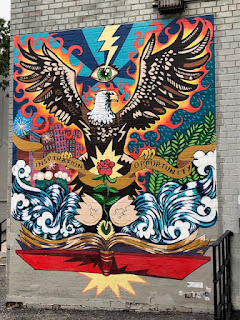On this date 50 years ago, two baseball teams took to the field. The game they would play would have little bearing on league standings: One team held a comfortable lead in its division; the other was fighting to stay out of last place.
Two players, however, noticed that something was different. Pittsburgh Pirates’ catcher Manny Sanguillen recalls that his teammate Dave Cash alerted him that something unprecedented was happening. “We have nine brown players on the field,” Sanguillen, a native of Panama, said to himself.
A quarter-century after Jackie Robinson became the first known* Black player in Major League Baseball, the Pittsburgh Pirates—who would win the World Series that year—fielded an entirely nonwhite lineup against their cross-state rivals, the Philadelphia Phillies.
I am mentioning that milestone on this blog because some have accused cycling of having a “color problem.” I don’t disagree, though I believe the “problem” is different from what is commonly perceived.
If you look at images of cyclists in advertising and other media, you might come to the conclusion that cycling is “a white thing” or that “Blacks don’t ride.”
Just as African Americans have been playing baseball for as long as the game has existed (and Latin Americans for nearly as long), black and brown (and yellow and red) people have been riding almost since the first bicycles were made.
Anyone familiar with the history of cycling knows about Major Taylor, the first Black cycling World Champion. There have been other Black and Brown elite riders in the century since Taylor‘s victory, but they haven’t received the recognition, let alone the money, of white champions—including some who won by, ahem, questionable methods. Their lower visibility causes bike makers and related companies to conclude that people darker than themselves don’t mount.
If you live in any large US city, the kids riding BMX in the park are more than likely not to be White. So are the folks who deliver portfolios or pizzas—or go to work in stores, warehouses or other places—by bicycle.
Oh, and I’ve seen more than a few groups, formally organized or not, of Black or Hispanic people, riding to train or just for fun. In fact, when I was a regular off-rode rider, I pedaled singletrack and local trails with a “posse” in which I was the only White rider.
The thing is, such riding usually goes unnoticed by those who form the public images of cyclists, just as great Black and Latin American hitters and pitchers—who were at least the equal of their White counterparts—remained as invisible as most Little Leaguers when they played in the Negro Leagues rather than the self-appointed Major Leagues.
*—I have enormous respect for Jackie Robinson. But it’s entirely possible that he wasn’t the first Black Major League Baseball player: Others, including Babe Ruth himself, were rumored to be Negroes who passed as white.







